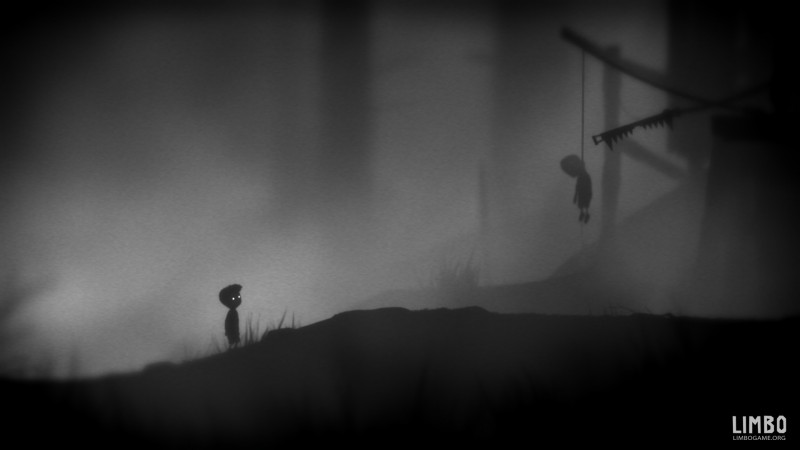There's this conversation piece by the good folks at Rockpapershotgun.com on different takes on Limbo. It's a nice read and it illustrates how the game mechanics and design combine to let the developer make a point about the behavior of the player.
(Some "spoilers" at the end, they will be dully signposted but really, either you're going to play the game or not, and if you are undecided, you should play it)
The interesting thing to me, however - and one of the great merits of interactive storytelling, in my opinion - is that I got a very different feeling about the theme and overall point of the game during my play-trough.
In the RPS piece, John argues that the games left-to-right, trial and error nature is subtly trying to make a point about what the player will put up with so that he can navigate from left to right, even though he has no discernible purpose for doing so.
This is an interpretation fundamentally based on game mechanics, and it paints a picture I had not considered - that of Limbo as a commentary on the player.
My own take on it was first and foremost based on the expectation brought on by the name. Limbo. You can write hundreds of pages on the theological and mythological meaning of the world, and a different cultural perspective might bring in yet another interpretation, but to me, the word evokes kind of hell, a place where lost souls wander waiting for redemption - it is a purgatory, a place between salvation and damnation.
This interpretation fits quite nicely with the game's aesthetic. Everything has a dark, edgy, menacing feeling to it, and our small character has an innocent, but ghost-like, feeling to it.
Here the arbitrary death and trial-and-error mechanics make a lot of sense, and the mostly generous check-pointing fits in as well: where John saw a game about teasing the player, I see a game about punishment.
The world and its masters are making the boy suffer death after death, rewinding time after each one but keeping his memory of the events intact, that he might keep suffering them over and over until he overcomes them, one step closer to redemption.
[discussion about the ending follows: consider this a spoiler alert]
And then it ends, in a final, magnificent jump that shatters the boundaries of the boy's hell. Or does it?
After that final jump, he finds himself in a pristine meadow, no aggression in sight, in the company of a ghost-like girl, much similar to him. And then the game ends. But there's a twist...
Finally we get to understand that weird title screen, that meadow with two fly-ridden corpses. That meadow exactly like the one in the end, where the children were standing at the spots corpses now reside. The game has come full-circle, and opened a lot of possibilities for interpretation.
Was the girl the final test, after all the hellish traps, a siren to finally ensnare the boy into eternal damnation?
Was it the final redemption, after the hero's journey of the boy's soul, the reunion of two souls that were separated by a tragic death at that spot?
Or was it something altogether more cruel, a true hell for the boy's soul, a never-ending circle of finding his princess and then being taken back to the beginning, forced to forever face the same challenges for the same result, for eternity? And here we have it again - commentary on the nature of games and the player.
This is my take on Limbo - I don't think I will ever be sure about what the ending means to me - maybe that's the point, maybe it will mean different things in different stages of my life. It's ambiguous narrative will forever be subject to each individual's cultural and intellectual perception of the world.
What is your take on it?

No comments:
Post a Comment